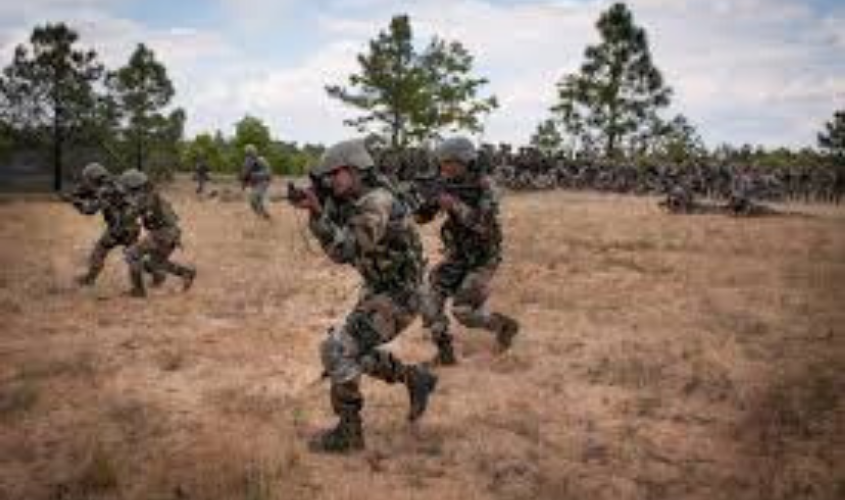
SOURCE: SUNDAY GUARDIAN LIVE
Fear is something that is common to all human beings and the reaction to fear is to “fight or fly”. One of India’s most loved and revered Army Chiefs who led India to a decisive victory in the Indo-Pak war of 1971and who is from my regiment, the 5th Gorkha Rifles (FF) stated that “Every human being is afraid of something—some are afraid of many things. However, if anyone says that he is not afraid; he is either a liar or a Gorkha.”
The relevance of Sam Manekshaw’s statement is clear to us who belong to Gorkha regiments and who have led these brave soldiers into battle.
Prior to India’s Independence, Gorkha soldiers fought with distinction for the British Indian Army in both the World Wars. During World War II, Indian Army was awarded 20 Victoria Crosses, Britain’s highest award for valour. Of these, ten were awarded to the Gorkhas and four of them were awarded to soldiers from my regiment.
Gorkha soldiers are tough. Living in the hills of Nepal makes them strong and resilient and they can stand the vicissitudes of war, climate and terrain better than most. No one can match their movement in the mountains. They are inveterate hunters and in the hills of Nepal, the only meat they eat is what they get from hunting. The word for meat in Gorkha units even today is shikar. They are cheerful in disposition and nothing disturbs their equanimity. They are loyal to the core and fearless in battle. They are cheerful in adversity and however bad the situation they never complain. All this makes them amongst the best soldiers in the world and they are much sought after. Soldiering for them is a natural profession and Gorkha regiments have men from the same family who have served with the regiments for five generations and more.
Gorkhas are adept in the use of the khukri—a knife with a curved blade, heavy on the outside and tapering towards the inside, which is very sharp. What the Gorkha can do with the khukri is pure magic. The length of the blade of a battle khukri is from 14 to 16 inches. It has a notch near the handle to prevent blood from flowing over and making the handle slippery.
Nepal was the only Hindu kingdom in the world and the presiding deity in all Gorkha Regiments is the Goddess Durga. The most important festival is Dussehra, which is called “Dassain” in Nepali. Dassain commemorates the triumph of good over evil and the victory of Goddess Durga over Mahisura. Animal sacrifices are made during this festival and every young officer has to prove his blood by demonstrating that he too is adept in the use of the khukri.
During the Indo-Pak war of 1971, my battalion, the 4th Battalion the 5th Gorkha Rifles (FF) was tasked to capture a Pakistani post which was protected by marshes, minefields and barbed wire. The battalion decided to assault the enemy position through the marshes which had three to four feet of water. The Commanding Officer, Lieutenant Colonel Arun Harolikar led the battalion in what has come to be known as the last khukri attack in modern military history. The enemy came to know of our presence only when the Gorkhas were upon them. Khukris flashed that night and Pakistani heads rolled to the dexterous use of this Gorkha weapon. The enemy was decimated. Those who managed to escape passed the word around: “Don’t mess with the Gorkhas. If you do, you may lose your head!”
Later, this same battalion was used in the Indian Army’s first heliborne operation, where it landed deep inside East Pakistan for the capture of Sylhet. Although the strength had depleted after two savage battles, the Corps Commander said: “Send the Gorkhas. I know them well. They will deliver.” And so they did, but at great cost. The battalion, which had been reduced to just about 380 men, fought an enemy force of two Pakistani brigades and troops of the Sylhet garrison and held them for nine days and nights. They were without food and water and with diminished ammunition in the ratio of 1:20. Although the enemy was in overwhelming strength, the tenacity, courage and fortitude of the Gorkhas won the day. The battalion was no doubt led well. It started the war with 18 officers but at the end of a 14-day war, only seven officers survived. Four were killed and seven were wounded. The casualties in men killed and wounded were much more. The medical facilities were destroyed during the battle and no medication was available—even water for the wounded was not available but not one of them complained!
It was acknowledged by the Eastern Command that this under strength battalion of Gorkhas hastened the fall of Dhaka by keeping two Pakistani brigades and the Sylhet garrison tied down and unavailable for the defence of Dhaka.
There are many more instances to recount but space does not permit the sharing of the valour of the Gorkhas.
The ongoing border dispute with Nepal is unfortunate. There is no doubt that this has occurred at the instigation of China. The road built by us close to the trijunction of India, Nepal and China at Lipulekh has worried the Chinese, who have used their economic clout to pressurise the Communist government of Nepal to raise this issue. We who have lived life long with the Gorkha soldier hope that better sense prevails and there is a peaceful resolution to the problem.
Major General (Retired) Ian Cordozo has led the Gorkhas of his battalion in the 1965 and 1971 Indo-Pak wars. He was disabled with the loss of a leg in the 1971 war but proved that disability was not a deterrent to command a battalion, a brigade and a division.
https://defencenewsofindia.com/india-nepal-and-the-gorkha-connection/






